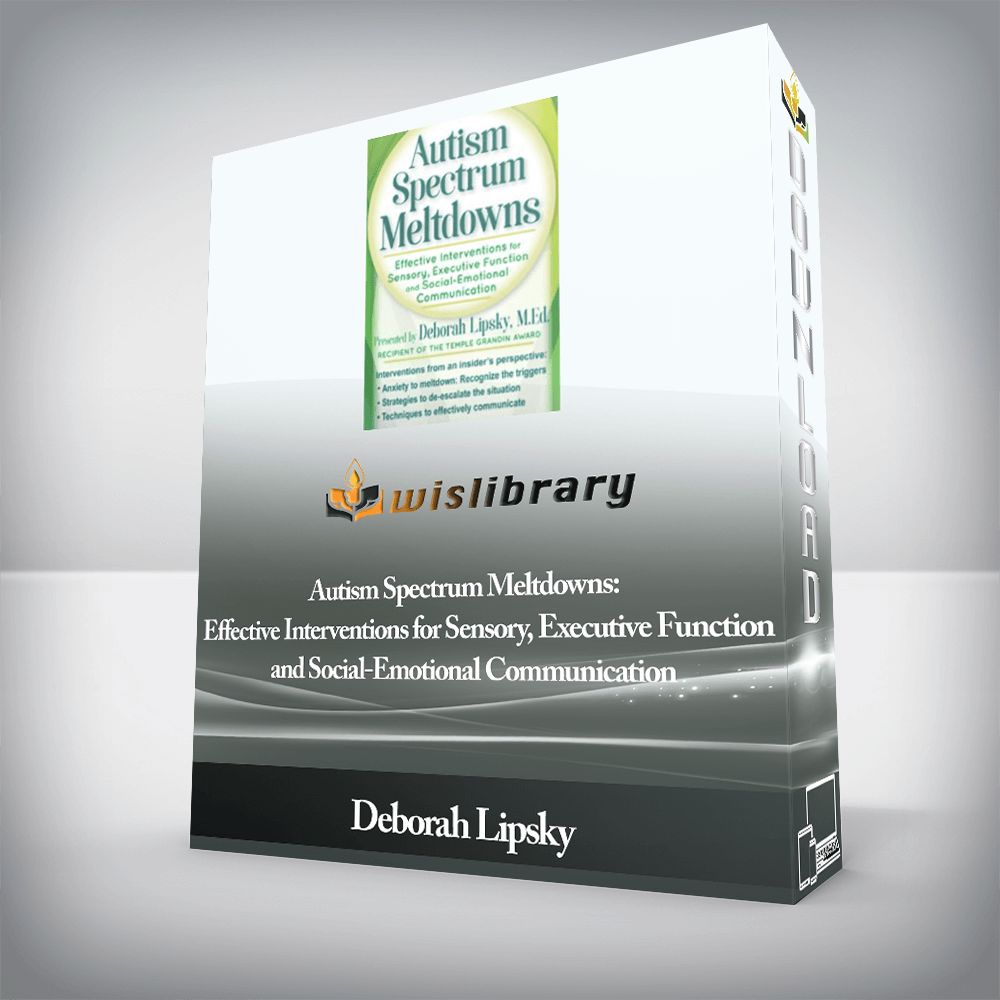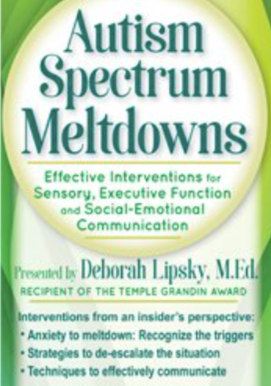

Understanding and recognizing personal triggers will be a major benefit in developing a plan for yourself or individuals…
File Size: 1.17 GB.

Individuals on the autism spectrum often react very strongly to seemingly minor changes in routine, patterns, food, clothing, noise, and a host of other environmental factors. Understanding and recognizing personal triggers will be a major benefit in developing a plan for yourself or individuals you work with to lower the levels of anxiety and avoid a catastrophic reaction.
Deborah Lipsky, M.Ed., presents a rare and unique perspective from someone who lives with autism every day. Through a combination of personal experiences with professional knowledge she will offer you a rare glimpse into the neurological processing differences of an individual with autism and explain the physical and mental processes of a meltdown. You will participate in interactive exercises where you are “autistic” for a moment to gain a greater appreciation of the challenges individuals with autism face. You will learn how to recognize the differences between a meltdown and a behavioral tantrum and what can trigger a meltdown. You will walk away with effective intervention strategies to use before, during, and after a meltdown.
The Neurological and Physiological Differences of Autism
Anxiety to Meltdown
Effective Behavioral Interventions Based on the S.C.A.R.E.D. Model
There are no reviews yet.
You must be <a href="https://wislibrary.org/my-account/">logged in</a> to post a review.